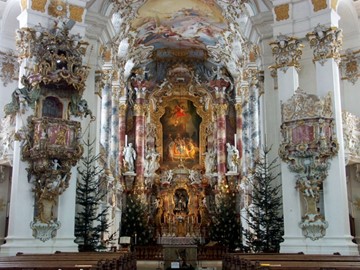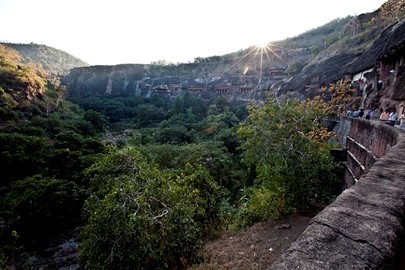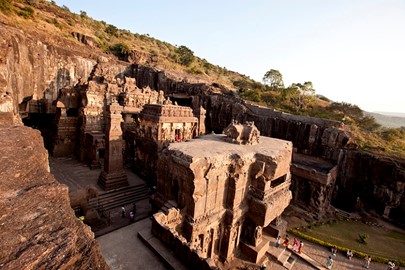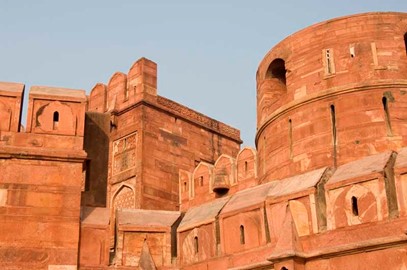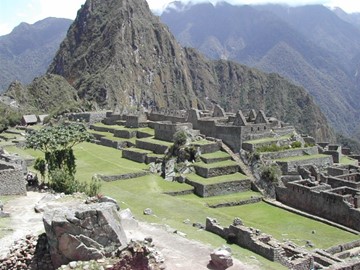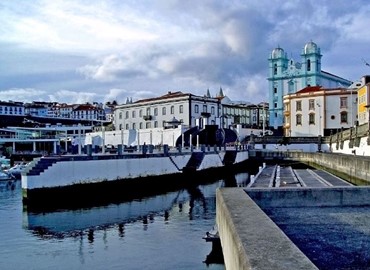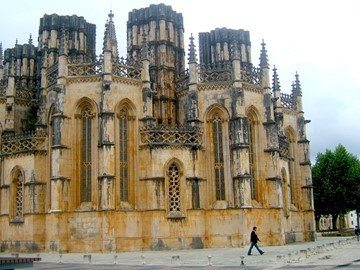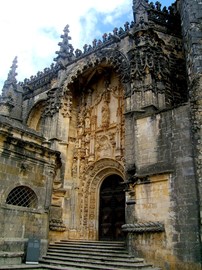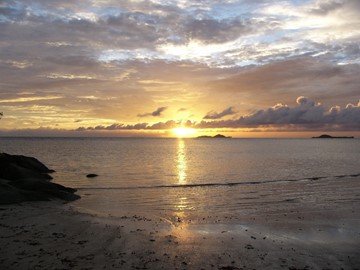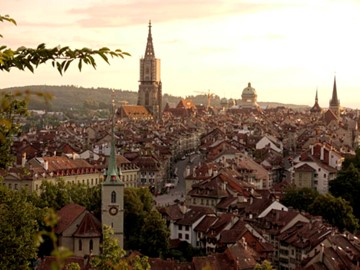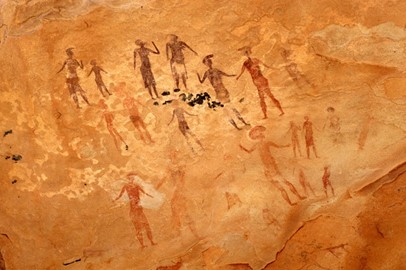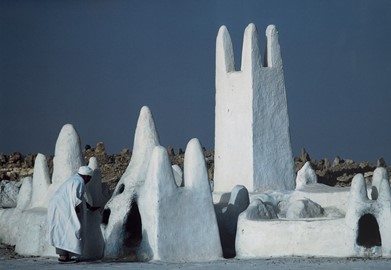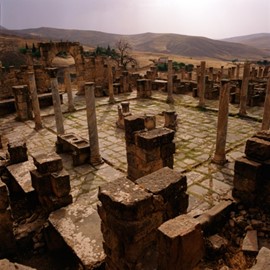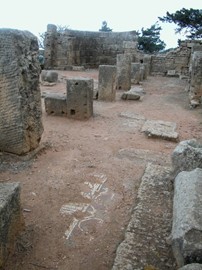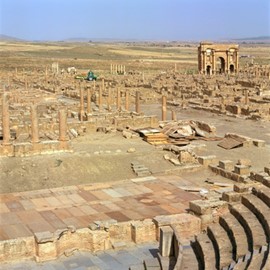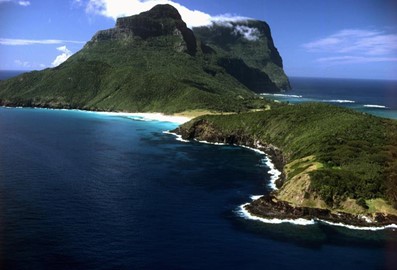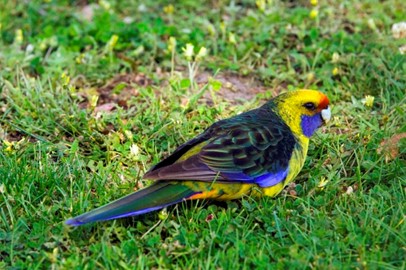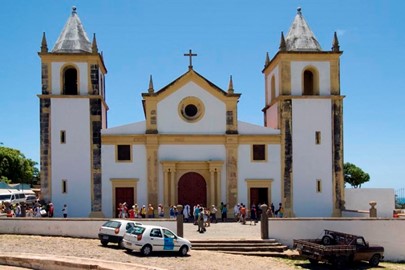search
Pilgrimage Church of Wies
The Pilgrimage Church of Wies, a UNESCO World Heritage site in Germany, is a stunning example of Bavarian Rococo architecture, designed by Dominikus Zimmermann in the mid-18th century. Built as a place of pilgrimage following reports of miracles, it features an ornate interior with vibrant frescoes and intricate stucco work that blend harmoniously with its simple exterior. The church stands as a testament to religious devotion and artistic mastery, attracting visitors for its cultural and historical signifi... Read More
Ajanta Caves
The Ajanta Caves, a UNESCO World Heritage site in India, are a remarkable collection of ancient rock-cut Buddhist monuments dating from the 2nd century BCE to the 6th century CE. Renowned for their exquisite paintings and sculptures, these caves showcase a fusion of artistic and architectural brilliance, depicting Buddhist religious themes and narratives. Discovered in 1819, the site comprises 30 caves, including monastic halls and sanctuaries, offering a glimpse into India’s rich cultural and spiritual his... Read More
Ellora Caves
The Ellora Caves, a UNESCO World Heritage site in India, are a remarkable complex of rock-cut temples and monasteries dating from the 6th to 10th centuries CE. Carved into a basalt cliff, this site features 34 caves showcasing a blend of Buddhist, Hindu, and Jain artistry, with intricate sculptures, towering pillars, and detailed reliefs. Highlights include the grand Kailasa Temple, an architectural marvel dedicated to Lord Shiva, reflecting the skill and devotion of ancient artisans. Ellora stands as a tes... Read More
Agra Fort
Agra Fort, a UNESCO World Heritage site in India, is a majestic red sandstone fortress showcasing Mughal architectural brilliance. Built primarily by Emperor Akbar in the 16th century, it served as a royal residence and military stronghold, housing ornate palaces, mosques, and audience halls. Its robust walls and strategic design reflect a blend of defensive ingenuity and imperial grandeur, offering a glimpse into India's rich historical legacy.
Taj Mahal
The Taj Mahal, a UNESCO World Heritage site in India, is an iconic 17th-century mausoleum commissioned by Emperor Shah Jahan for his wife Mumtaz Mahal. Crafted from white marble, it showcases exquisite Mughal architecture with its symmetrical design, intricate carvings, and grand dome. The site also includes lush gardens, a mosque, and a guest house, reflecting its historical and cultural significance. It stands as a timeless symbol of love and a masterpiece of global heritage.
Cuzco
Cuzco, a UNESCO World Heritage site in Peru, is a historic city nestled in the Andes Mountains at an elevation of about 3,400 meters (11,150 feet). Once the capital of the Inca Empire, it showcases a remarkable blend of pre-Columbian and colonial architecture, including the iconic Qorikancha temple and the grand Plaza de Armas. Its well-preserved ruins, vibrant culture, and role as a gateway to Machu Picchu make it a global treasure. Today, Cuzco thrives as a center of indigenous heritage and tourism.
Machu Picchu
Machu Picchu, a World Heritage site in Peru, is a remarkably preserved 15th-century Inca city nestled high in the Andes Mountains. Built with precise stonework, it features terraces, plazas, and residential structures that showcase advanced engineering and architectural skill. Discovered in 1911 by Hiram Bingham, it offers insights into Inca civilization and attracts visitors worldwide for its historical significance and stunning scenery.
Angra do Heroismo
Angra do Heroísmo, located on Terceira Island in the Azores, Portugal, is a UNESCO World Heritage site renowned for its well-preserved Renaissance urban layout and historical significance. Established in the 15th century, it served as a vital maritime hub during the Age of Sail, connecting Europe, Africa, and the Americas. The town features notable architecture, including the São João Baptista Fort and the Sé Cathedral, reflecting its strategic and cultural importance. Its enduring charm lies in its colorfu... Read More
Monastery of Batalha
The Monastery of Batalha, a UNESCO World Heritage site in Portugal, is a stunning example of Gothic architecture blended with Manueline style, constructed in the late 14th century to commemorate a historic military victory. Its intricate stonework, including the Founder's Chapel and the Unfinished Chapels, showcases exceptional craftsmanship and historical significance. The monastery also served as a royal pantheon, housing the tombs of Portuguese kings and nobility. Today, it stands as a well-preserved tes... Read More
Convent of Christ in Tomar
The Convent of Christ in Tomar, a UNESCO World Heritage site in Portugal, is a historic monument renowned for its architectural evolution and cultural significance. Originally founded as a Templar stronghold in the 12th century, it later became the headquarters of the Order of Christ, reflecting a blend of Romanesque, Gothic, Manueline, and Renaissance styles. Its iconic Charola, a 16-sided Templar church, and the intricate Manueline window are standout features, showcasing centuries of Portuguese history a... Read More
Belém
The Monastery of the Hieronymites and Tower of Belém in Lisbon, a UNESCO World Heritage site in Portugal, represent exceptional examples of Manueline architecture from the 16th century. The monastery, a former religious complex, showcases intricate stonework and maritime motifs, reflecting Portugal’s Age of Discovery, while the nearby Tower of Belém, a fortified structure, served as a ceremonial gateway and defensive outpost along the Tagus River. Both monuments highlight the country’s historical wealth, ar... Read More
Vallée de Mai
Vallée de Mai, a UNESCO World Heritage site in Seychelles, is a pristine palm forest renowned for its unique biodiversity. This ancient ecosystem is home to the iconic coco de mer, a rare palm species bearing the world’s largest seed, alongside other endemic flora and fauna like the Seychelles black parrot. Often described as a 'living museum,' it offers a glimpse into a prehistoric world, preserved through its isolation and protected status. Visitors can explore its lush trails, immersing themselves in a n... Read More
Berne
The Old City of Berne, a UNESCO World Heritage site in Switzerland, is a well-preserved medieval town founded in the 12th century. Its sandstone buildings, arcaded streets, and historic fountains, including the iconic Zytglogge clock tower, showcase a unique blend of architectural charm and cultural significance. The city's layout, largely unchanged since the Middle Ages, reflects its rich history as a political and economic center. Today, it remains a vibrant testament to Switzerland's heritage, attracting... Read More
Abbey of St Gall
The Abbey of St Gall, a UNESCO World Heritage site in Switzerland, is a historic Benedictine monastery founded in the 8th century, renowned for its exceptionally preserved medieval architecture and cultural significance. Its Baroque cathedral and library, housing one of the world’s oldest collections of manuscripts, highlight its role as a center of learning and spirituality. The site exemplifies Carolingian-era design and remains a testament to centuries of European religious and intellectual history.
Benedictine Convent of St John
The Benedictine Convent of St John at Müstair, a UNESCO World Heritage Site in Switzerland, is an exceptional example of Carolingian-era monastic architecture, founded around 775, possibly by Charlemagne. Renowned for housing the country’s most significant collection of early medieval figurative murals from around 800, alongside Romanesque frescoes and stuccoes, it reflects over 1,200 years of religious and artistic history. The convent remains an active Benedictine community, blending spiritual life with c... Read More
Great Smoky Mountains
Great Smoky Mountains National Park, a UNESCO World Heritage Site in the United States, is renowned for its rich biodiversity, featuring over 19,000 documented species of flora and fauna. The park showcases ancient mountains, pristine streams, and old-growth forests, offering a glimpse into the region's natural and cultural history. It attracts millions of visitors annually for its scenic beauty, hiking trails, and opportunities to explore historic structures like log cabins and grist mills. This protected ... Read More
La Fortaleza and San Juan
La Fortaleza and San Juan, a UNESCO World Heritage site in the Puerto Rico, is a historic fortified complex and colonial city renowned for its well-preserved Spanish architecture and military engineering. Established in the 16th century, it includes La Fortaleza, the governor’s residence, and formidable structures like Castillo San Felipe del Morro, reflecting its strategic role in the Caribbean. The site showcases over 500 years of history, blending cultural influences and offering a glimpse into colonial ... Read More
Tassili n'Ajjer
Tassili n’Ajjer, a UNESCO World Heritage site in Algeria, recognized in 1982, is a vast desert plateau in the Sahara renowned for its prehistoric rock art and geological wonders. Featuring over 15,000 paintings and engravings from 6000 BCE, depicting ancient life and animals, it lies amid dramatic sandstone arches and canyons. This site showcases Algeria’s rich archaeological and natural heritage, preserving a vivid record of humanity’s early past in a stark, timeless landscape.
M'Zab Valley
M’Zab Valley, a UNESCO World Heritage site in Algeria, recognized in 1982, is a 10th-century oasis settlement in the Sahara, founded by the Ibadi Muslim sect. Its five fortified towns, or ksour, feature palm grove irrigation, mudbrick architecture, and a minimalist mosque design, reflecting a unique communal lifestyle. This well-preserved site showcases Algeria’s cultural heritage, blending human ingenuity with a harsh desert environment in a timeless urban landscape.
Djémila
Djémila, a UNESCO World Heritage site in Algeria, recognized in 1982, is a Roman city founded in the 1st century CE, nestled in a hilly landscape. Known as Cuicul, its well-preserved ruins—featuring a forum, temples, basilicas, and a theater—reflect sophisticated urban planning adapted to rugged terrain. This site showcases Algeria’s ancient heritage, offering a striking testament to Roman architecture and life in North Africa.
Tipasa
Tipasa, a UNESCO World Heritage site in Algeria, recognized in 1982 and listed as World Heritage in Danger from 2002-2006, is an ancient coastal city with Punic, Roman, and early Christian ruins from the 6th century BCE to the 6th century CE. Its scenic remains—featuring a theater, basilicas, and mausoleums—blend Mediterranean beauty with historical layers along the sea. This site showcases Algeria’s rich archaeological heritage, preserving a crossroads of civilizations despite past threats.
Timgad
Timgad, a UNESCO World Heritage site in Algeria, recognized in 1982, is a Roman colonial city founded in 100 CE by Emperor Trajan, laid out in a perfect grid in the Aurès Mountains. Its well-preserved ruins—featuring a triumphal arch, theater, and baths—reflect a model of Roman urban planning in North Africa. This site showcases Algeria’s ancient heritage, offering a vivid snapshot of imperial Rome’s reach and architectural prowess.
Lord Howe Island
Lord Howe Island, a UNESCO World Heritage site in Australia, is a pristine volcanic island renowned for its unique biodiversity and stunning natural beauty. Located in the Tasman Sea, it boasts lush forests, rugged cliffs, and crystal-clear waters teeming with marine life. Home to rare species like the flightless Lord Howe woodhen and vibrant coral reefs, the island offers a sanctuary for nature enthusiasts. Its dramatic landscapes, including the towering Mount Gower, combined with a tranquil atmosphere, ma... Read More
Tasmanian Wilderness
The Tasmanian Wilderness, a UNESCO World Heritage site in Australia, is a pristine expanse of rugged landscapes renowned for its ancient ecosystems and cultural value. Towering peaks, dense rainforests, and wild rivers harbor unique species like the Tasmanian devil and ancient huon pine, some over 3,000 years old. Glacial valleys and archaeological sites, including caves with evidence of Ice Age habitation, highlight its deep history. This untouched wilderness stands as a vital refuge for biodiversity and a... Read More
Olinda
The Historic Centre of the Town of Olinda, a UNESCO World Heritage site in Brazil, is a vibrant colonial settlement famed for its 16th- and 17th-century architecture. With colorful buildings, Baroque churches, and convents perched on hills, it reflects Portuguese influence and a rich cultural past. Inscribed by UNESCO in 1982, it’s renowned for its well-preserved urban layout and lively traditions, like Carnival. Olinda stands as a captivating showcase of Brazil’s colonial heritage.
